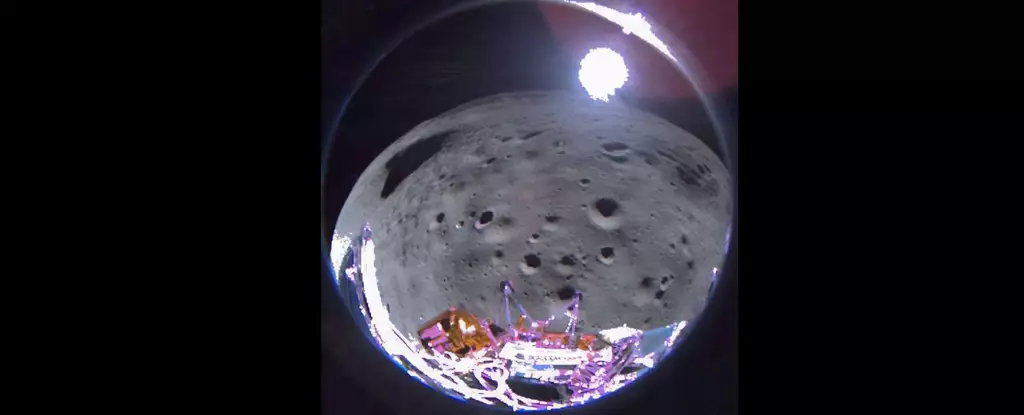Intuitive Machines’ Odysseus lander recently made a dramatic yet off-kilter touchdown on the Moon, which has presented a significant challenge for the mission team. Despite the awkward angle at which the lander is lying, limiting the data its antennas can transmit, it is still managing to communicate with flight controllers. This obstacle is a testament to the resilience and adaptability of the spacecraft.
Landing Location and Solar Power Concerns
NASA’s Lunar Reconnaissance Orbiter has been able to identify Odysseus’ landing spot near a crater called Malapert A in the Moon’s south polar region. This location is within a mile of its intended target, showcasing the precision of the landing despite the challenges faced during descent. However, the solar-powered lander is facing the possibility of going dark sooner than expected, posing a threat to the continuation of data collection.
The journey of Odysseus wasn’t without its technical challenges. Just before the landing, the Nova Control team had to reprogram the lander to overcome a disabled laser range-finding system. Thanks to the quick thinking and resourcefulness of the team, the spacecraft was able to utilize an experimental laser range-finding system from one of NASA’s payloads as a workaround. Additionally, the lander experienced a faster descent than planned, resulting in an unexpected landing angle and potentially tripping up one of its landing legs.
Despite the setbacks, the mission managers remain optimistic about the data collection capabilities of Odysseus. While the spacecraft may be lying on its side, which affects data transmission, it is still expected to continue operating until its solar panels are no longer exposed to light. The team at Intuitive Machines has expressed confidence in continuing to communicate with the lander until a specified time, showing their dedication to maximizing the mission’s potential despite the obstacles faced.
Read More: The Impact of Climate Change on Children’s Health
Hope for a Successful Mission
As the mission progresses, there is a sense of anticipation and hope for the successful continuation of Odysseus’ operations. While the lander may not be able to fulfill the full duration of operation initially planned, there is a possibility of unexpected developments that could extend its functionality. Similar experiences with other Moon lander missions, such as Japan’s SLIM spacecraft, provide a glimmer of hope for the Intuitive Machines team and their ambitious lunar mission.
The challenges faced by Intuitive Machines’ Odysseus lander mission highlight the complexities and uncertainties of space exploration. Despite the technical hurdles and unexpected landing conditions, the mission team’s resilience and adaptability demonstrate a commitment to overcoming obstacles and maximizing the mission’s potential. With continued communication and efforts to optimize data collection, the Odysseus mission remains a significant milestone in commercial space exploration and a testament to human ingenuity in the face of adversity.


Leave a Reply